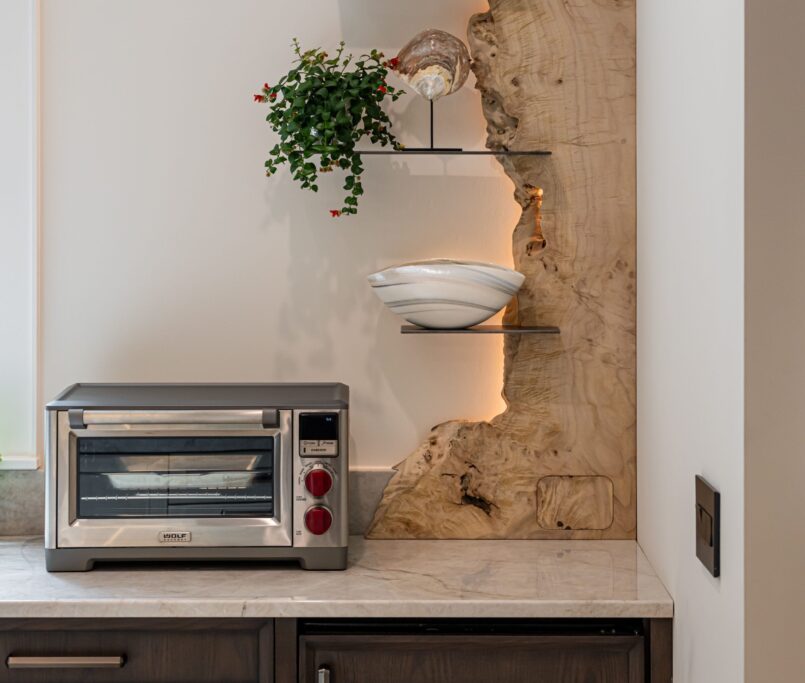Tired of your old furniture? Think about transforming it.
We’ve all seen those design shows where highly creative and resourceful people renovate furniture resulting in a brand-new look. While we know that in the non-TV world the process is not as quick and easy, it can be a viable option to work existing pieces into a new interior design plan.
How do we know when it makes sense to revitalize old furniture to meet a new vision, or when to purchase new?
When working with a client to plan a new space, Johanna and her team consider all options. There are many unique and creative ways to incorporate existing furniture into a new design, whether reupholstering, repurposing, or renovating and re-styling. Traditional design thought was that when transforming a furniture piece, it should match its time period. Those rules no longer exist, making it easier to marry pieces of varying styles.
“Transforming a homeowner’s beloved piece of furniture into something that works within a newly designed space is a very satisfying process,” Johanna explains. “We have the resources to make anything happen.”
There are some important factors to consider when deciding what to keep and what to replace.
Scale and function are a couple of the biggest drivers.
With new furniture, you control the style, form, and function to fit the desired décor and use of the space. If the scale and proportion of an existing piece doesn’t work, or if it’s simply not functional, it probably makes more sense to find a new home for it. However, furniture can be versatile. A bedroom dresser can be repurposed to work in a foyer, for example. Looking at the total project and thinking through form and function is part of what Johanna and her team do best.
The value of the piece is also a BIG factor.
And we’re not just referring to monetary value. Perhaps the piece is a family heirloom or a treasured find that the owner is sentimentally attached to. Efforts can be made to work existing furniture into any design if the desire is strong enough. Antique chairs can be reupholstered with new fabrics, and a new stain or coat of paint can be added, giving them a bright new future in the home. Sometimes sentimental attachment ends up being the biggest deciding factor on what to keep.
Time and money are always considerations when working on any design project.
Many people assume that renovating furniture is less expensive and saves time versus buying new. That is not always the case. Reupholstery and restorative work is done by highly skilled craftsmen. Everything is done by hand – there are no shortcuts. The process takes time and quality materials have a cost. The pandemic shutdown inspired many furniture repurposing DIY hobbyists, but trained quality craftsmen have become harder to find and are in high demand, resulting in longer turnaround times than in the past. When ordering new furniture, there may be some items that have extended ordering times, but overall, you have more control over timing and delivery.
The bottom line is that re-styling existing furniture may be worth the wait if the piece is valuable to you, but it won’t necessarily save much time, money, or effort. Whatever the decision, Johanna and her team have access to the best resources and craftsmen to make anything happen.
BEFORE

AFTER (Reupholstered chairs in their new space)

Last but not least, consider the impact on your community.
The furniture repurposing and reupholstery business has seen high demand in recent years as people realize the environmental impact of what has become a throw-away culture. The business of re-using furniture gives us a way to save resources, minimize waste and reduce the pressure on landfills. And, as consumers, we can support a time-honored trade that is a true art form.
However, if ultimately it makes more sense to buy new furniture, don’t just kick your old stuff to the curb. Donating your existing possessions can be very fulfilling. There are many worthy organizations that will take well-loved items and find a new home where they will be cherished for years to come.








